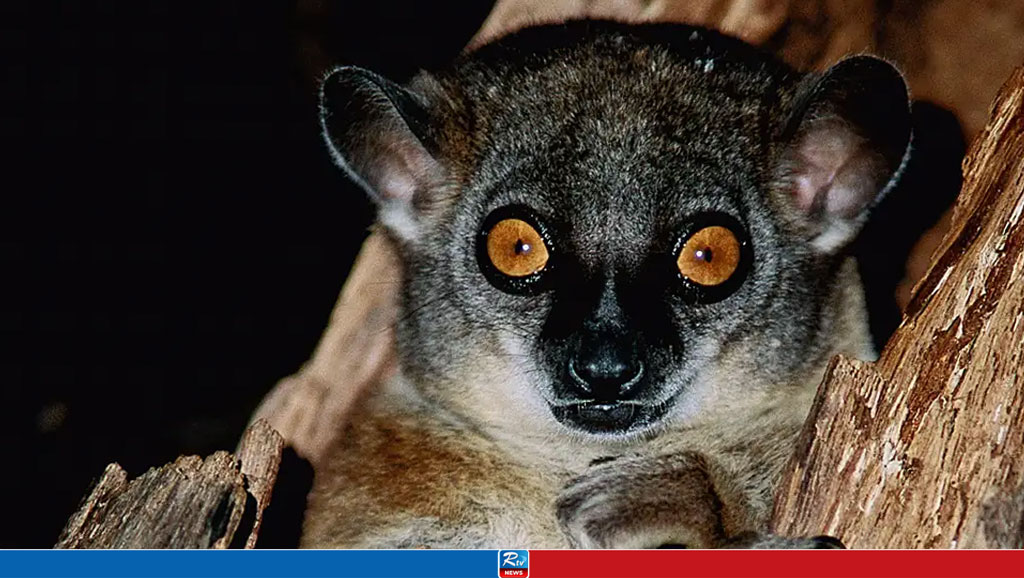Biodiversity: Can extinctions be stopped?

Humans actions are pushing countless plant and animal species to the verge of extinction. Can this be reversed?
Researchers last spotted the tiny, dark red splendid poison frog five years ago in the humid, lowland forests of western Panama. Since 2022, it's joined the likes of the lumpy brown Wyoming toad, the black Hawaiian crow and vivid blue Spix's macaw on the growing list of species dying out in nature.
Around 30% of 150,000 plant and animal species assessed by biologists face extinction through dangers like starvation as humans destroy habitat, poisoning from pesticides or hunting for profit and sport.
The last time such huge numbers of flora and fauna died so rapidly was when a large chunk of rock hit the planet 66 million years ago. The strike ended the age of the dinosaurs and wiped out 75% of all species.
Humans driving sixth mass extinction
In the geological epoch that has become known as the Anthropocene, humans are the asteroid. The natural or "background" extinction rate is about 10 to 100 species a year. Human activity is pushing that number to around 27,000 annually. Amazon deforestation alone could wipe out over 10,000 species in Brazil — a global biodiversity hotspot home to 15 to 20% of the world's flora and fauna.
Amphibians, insects, reptiles and fish are vanishing at ever-increasing rates. As species disappear, ecosystems lose stability and eventually collapse — with serious repercussions for humans.Fewer pollinators, for instance, reduces fruit, vegetable and nut production, while dwindling wild animal and fish populations means a loss of protein sources.
Conservation measures, environmental laws, breeding stations and nature reserves have helped reverse declines in some species. But their recovery cannot compensate for rapid global extinction rates, with more and more species under threat.
When breeding programs go wrong animals die
Conservation measures can fail if the approach isn't right. Take Madagascar's Sahafary sportive lemur. A 2019 survey found 87 individuals, said Edward Louis, head of NGO Madagascar Biodiversity Partnership. Louis has devoted about 25 years of his life to saving the bug-eyed primate.
Attempts to catch and breed the animals just haven't worked, explained Louis. "When you take them out of the wild, their bacteria flora changes, and they unfortunately die like 8 to 10 days later."
The main problem for the sportive lemur is destruction of forest habitat by locals who need charcoal for cooking. That's why conservationists are now trying to find an alternative fuel source to get locals on board with protecting lemur habitat.
Local acceptance is crucial for conservation success, said Magnus J.K. Wessel from German conservation group BUND.
"Wherever people value animal species for their self-identification and that of the region, and they benefit financially, things change," said Wessel. "You can clearly see it in Indian national parks with the tiger, even though it is a very dangerous animal."
Tiger numbers in India have risen from 1,400 animals 17 years ago to 3,600 today, thanks to protected areas, the fight against poaching and a $2.1 billion (€1.94 billion) investment over the last decade. Communities now see value in protecting the big cat and benefit from tourism. Current populations are still far from the 100,000 animals that lived in India around 1900 but conservationists see the increase as a success.
Still, there are no guarantees that numbers will go up, and even well-intentioned measures can have disastrous side effects. "You also have to be honest and face up to uncertainties," said BUND's Wessel.
In the 1990s, the WWF campaigned for an end to hunting rhinos for their horns used in Chinese medicine. Instead, they suggested saiga antelope antlers be used as a substitute. Antelope populations collapsed by 97%.
Conservation mascots: Naked mole-rats and rhinos
Few people directly experience the consequences of species' extinction, so getting the message out is important. According to Wessel, large, charismatic animals like rhinos and tigers, as well as little, cute furry ones can help to win the public over to the cause.
"Whimsical works too," he said. "There is a large fan community for the naked mole-rat and, it's certainly not a pretty an animal."
But the wrinkly rodent is an exception. Most species are found in the ground and as Wessel points out, humans tend not to like creepy crawlies. So, the only way to protect these animals is by establishing reserves for the more charismatic species.
And such conservation costs money, which is problematic given that not all countries are deeply invested in environmental protection, and even those that are, usually commit a maximum of 1 to 1.5% GDP to the cause.
European countries invest the most, followed by Asian and South American states. Senegal leads Africa with 0.5% of its GDP.
Even the countries that do invest more in conservation are seeing species go extinct. Since 1990, the proportion of endangered species has risen sharply in Malaysia, Uganda and Tanzania, which spend comparatively little on protection, as well as in higher spending France, China and New Zealand.
Calculating the survival chances of species
The International Union for Conservation of Nature (IUCN) tries to assess when conservation pays off, using a kind of scale. It predicts the potential of a species to recover with or without conservation efforts, for instance, as well as the maximum population size for each species.
Southern Africa's blue crane is one species that could see major benefits from intervention. Over the next decade, the population could nearly fully recover in the wild. But the outlook for the Sahafary sportive lemur, which Edward Louis is trying to save, isn't as bright. Populations could become viable in the next 10 years if reforestation efforts are carried out, but the animal is currently on the brink of extinction.
Louis is now working with a local company in Madagascar to produce fuel briquettes from fast-growing eucalyptus as an alternative to charcoal made from clear cutting lemur forest habitat.
So far, the briquettes have not caught on with locals. "They don't seem to want eucalyptus," said Louis. "They [would] rather use endemic trees." The eucalyptus aroma is absorbed into the rice during cooking.
Still, Louis is trying everything he can to save the lemur.
Comments
Rain likely in 4 divisions including Dhaka in next 24 hours

Student politics can be reintroduced at BUET campus: VC

High Court allows student politics in BUET

The Indian Product Boycott Movement vs. Reclaiming the Hat

Schools and colleges to remain closed for 7 days

DU classes to be held virtually amid heatweave

Dozens arrested as US campus protests over Gaza spread


 Live Tv
Live Tv




